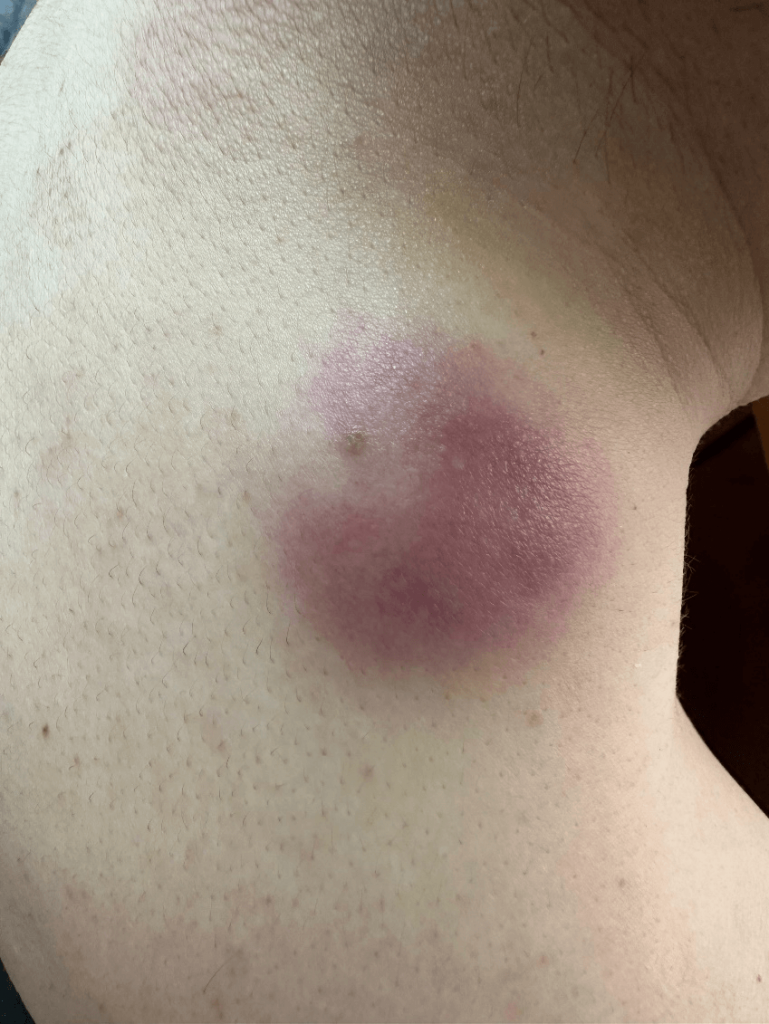Skin Abscess
Causes, Symptoms, and Treatment of Skin Abscesses in Singapore
What is a Skin Abscess?
A skin abscess is a localised infection beneath the skin that results in a red, swollen, and often painful lump filled with pus. Abscesses can develop anywhere on the body, especially on the face, armpits, buttocks, and thighs.
These infections are caused by bacteria, and without proper care, they can become larger and more uncomfortable over time. While anyone can develop an abscess, factors like personal hygiene, immunity status, and skin injuries increase the risk.
Common Causes of Skin Abscesses
Skin abscesses are usually caused by bacterial infections, with Staphylococcus aureus being the most common culprit. Other common causes include:
- Infected Cysts: Skin cysts, such as sebaceous or epidermoid cysts, can become infected and lead to abscess formation.
- Pilonidal Cysts: These cysts form at the base of the tailbone and can lead to abscess.
- Anal Fistulas: An abnormal connection between the anal canal and the skin around the anus, which can get infected and cause perianal abscess.
- Ingrown Hairs: When hair grows into the skin, it can cause localised infections, leading to abscess formation.
- Blocked Sweat Glands: Conditions like hidradenitis suppurativa cause blocked glands, leading to recurring abscesses. This condition usually occurs at armpit or groin region.
Key Symptoms of a Skin Abscess
Recognising the symptoms of a skin abscess early on can help with prompt treatment and prevent complications. Common symptoms include:
- Red, Swollen Lump: A noticeable red, swollen, and tender bump under the skin.
- Pain and Tenderness: Abscesses are usually painful, especially when touched.
- Warmth: The infected area often feels warm to the touch.
- Pus Drainage: Abscesses may leak yellow, white, or green discharge out. Symptoms may get better with the pus drainage.
- Fever or Chills: Severe cases can cause systemic symptoms, including fever or chills, indicating a widespread infection.
How to Treat a Skin Abscess
Treatment depends on the severity and location of the abscess. Here are common ways to treat skin abscesses:
- Antibiotics: If the infection is mild, antibiotics may be prescribed to treat the bacteria causing the abscess.
- Incision and Drainage: For larger abscesses, a doctor may need to make a small incision to drain the pus. This procedure helps speed up healing and relieve pain.
- Pain Relief: Over-the-counter pain relievers, like ibuprofen or acetaminophen, can help reduce pain and swelling.
- Follow-Up Care: In some cases, ongoing care, such as daily dressing changes, may be necessary to help the abscess heal fully.
When to See a Doctor for a Skin Abscess
If you experience any of the following symptoms, contact a healthcare provider:
- The abscess is large, painful, or growing
- You have a fever, chills, or other signs of a systemic infection
- The abscess doesn’t drain on its own or recurs frequently
- The abscess is located near your face, spine, or groin
- You have an underlying health condition like diabetes or a weakened immune system
Complications of Untreated Skin Abscesses
Untreated abscesses can lead to complications, including:
- Cellulitis: A serious bacterial infection of the skin and surrounding tissues.
- Sepsis: A potentially life-threatening condition where the infection spreads to the bloodstream.
- Chronic Abscess Formation: Conditions like hidradenitis suppurativa can cause recurring abscesses that require long-term management.
Preventing Skin Abscesses: Simple Tips
Preventing skin abscesses involves good hygiene practices and managing underlying conditions. Here are some helpful prevention tips:
- Practice Good Hygiene: Wash your hands and skin regularly to reduce the spread of bacteria.
- Clean and Cover Wounds: Clean any cuts, scrapes, or insect bites with soap and water, then cover them with a sterile bandage to prevent infection.
- Avoid Sharing Personal Items: Items like towels, razors, and clothing can spread bacteria; avoid sharing them whenever possible.
- Manage Chronic Conditions: If you have conditions like diabetes or hidradenitis suppurativa, managing these can reduce the risk of abscess formation.
- Remove Foreign Objects Promptly: Removing splinters, thorns, or other objects embedded in the skin quickly can help prevent infection.
FAQs About Skin Abscesses
Small abscesses sometimes drain and heal on their own, but many require medical treatment to prevent complications.
While the bacteria causing an abscess can be contagious, the abscess itself is not. Avoid sharing personal items to reduce the spread of bacteria.
With proper treatment, abscesses can heal within one to two weeks. More severe cases may take longer or require additional care.
Skin abscesses are common yet treatable conditions that, if recognized early, can be managed effectively. Understanding the causes, symptoms, and treatment options can help you prevent abscess formation and reduce the risk of complications.




Book Appointment
Book your consultation today for expert surgical care.
